 Keeping close with our discussion last week about the uses of social media (SM) for non-profits, I feel there’s been enough interest that it might be useful to explore this topic further. I’ve had a lot of questions about the point of it all, and if there’s really any value in SM marketing our respective causes. My answer is a careful, “Yes.”
Keeping close with our discussion last week about the uses of social media (SM) for non-profits, I feel there’s been enough interest that it might be useful to explore this topic further. I’ve had a lot of questions about the point of it all, and if there’s really any value in SM marketing our respective causes. My answer is a careful, “Yes.”
Why be careful?
I’m cautious because of many of your comments. There’s a fine line for people/business when addressing their values in terms of the non-profits they give to. Sometimes the best brand ambassadors are those who are willing to step out on a limb and declare thier allegiance to an organization they support. Other times, that’s not the case.
I don’t believe our giving should be made public in a ‘What’s in it For Me’ sense. I reluctantly put out the ‘Challenge’ knowing that it might turn some people off. But the point wasn’t simply in the gift. It was to start a discussion, and it did.
I’m the last person who would encourage anyone to use a medium knowing that it wasn’t appropriate for their messaging. There were lots of cons to the way my challenge was set up–let’s face it–and I don’t use client time that way. That was an opinion piece. I’m glad I did it. But working (obviously) for a marketing agency, my goal is to identify the best communications strategies for our clients, and to implement them. Not to simply ‘experiment.’ We create results at Engine, and we have the numbers to prove it.
However, I have just as many questions about Twitter, Facebook, and all things social as many of you do. It’s a new platform, and it’s still evolving. It needs to be tested.
I’m tired of reading lists of ‘Top 5 Twitter Uses’ and ‘Twenty Ways to Increase Your Twitter Following.’ What do those things even mean? How do they translate to results for business? That’s part of the greater challenge: to find meaningful value that creates results for clients, and also serves to make the world a slightly better place.
I have given a brief overview of some of the lessons learned in the challenge, and the implications of it, last week. I won’t go over them all today. Today is about movement.
How do we help our clients create worth using SM?
We move. We don’t stop at simply talking, following and tweeting. We don’t stop at creating relationships and networking online. We meet each other in person. We discuss how to connect, what values we share, and how those things translate into the ‘real world.’ Then we actually implement the changes.
The worst thing we could do is let the action get lost in translation.
We know that one of the least comfortable positions from which to move as a person, or in business, is from the reactive. Proactive is the place to be. That is where I see the value for non-profit and business in SM.
Being proactive means not just talking, but doing. I can’t stress this enough. SM is a piece of the puzzle, but it doesn’t create the whole picture. However, we can’t brush it off as being a waste of time.
To all you naysayers: I get it. I wasn’t a SM convert from the get-go either. It took about a year for me to start really understanding how it could benefit those I work for and with.
Now that I see it though, I don’t want the value to get lost. I think there are many truths that still need disseminating about SM. Part of that entails generating more conversation. I think a larger part will take people walking the talk.
What are you doing about it?
We’d love to hear your thoughts.


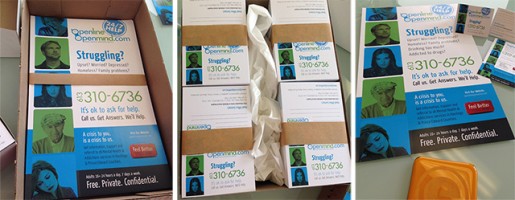
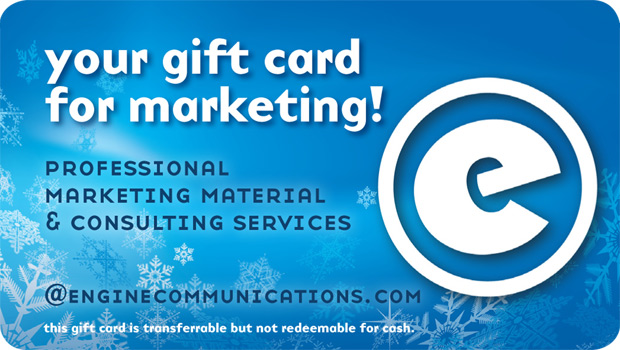
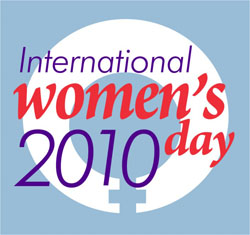

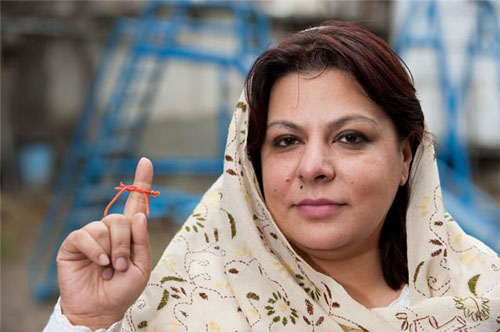
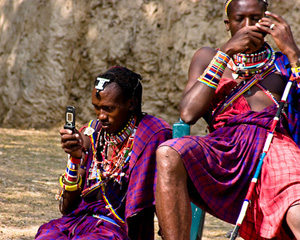

 There’s this one women’s washroom in a restaurant (which shall remain nameless) here in Belleville that really irks me. I’m a pretty small woman, but the narrow L-turn in the hallway leading into it, bookended by two doors which open in the wrong directions, makes it really difficult to maneuver. Everytime I go through this obstacle course I think, “What would I do if I were in a wheelchair?” It’s ridiculous.
There’s this one women’s washroom in a restaurant (which shall remain nameless) here in Belleville that really irks me. I’m a pretty small woman, but the narrow L-turn in the hallway leading into it, bookended by two doors which open in the wrong directions, makes it really difficult to maneuver. Everytime I go through this obstacle course I think, “What would I do if I were in a wheelchair?” It’s ridiculous. We here at Engine love it when our colleagues and clients come up with amazing ideas! Here’s one that we just had to share.
We here at Engine love it when our colleagues and clients come up with amazing ideas! Here’s one that we just had to share.  Keeping close with our discussion last week about the uses of social media (SM) for non-profits, I feel there’s been enough interest that it might be useful to explore this topic further. I’ve had a lot of questions about the point of it all, and if there’s really any value in SM marketing our respective causes. My answer is a careful, “Yes.”
Keeping close with our discussion last week about the uses of social media (SM) for non-profits, I feel there’s been enough interest that it might be useful to explore this topic further. I’ve had a lot of questions about the point of it all, and if there’s really any value in SM marketing our respective causes. My answer is a careful, “Yes.”
